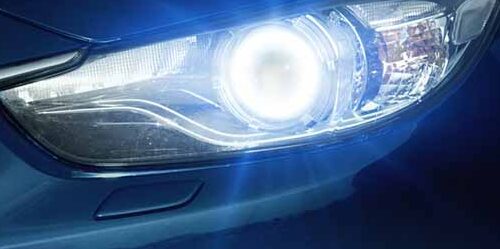The secrets of HID revealed

Fitting High Intensity Discharge (HID) bulbs remains a concern for those working in the aftermarket sector, with many mechanics admitting they’re still nervous about fitting them.
Ring, the leading supplier of lighting to the automotive aftermarket, explains how following a few simple steps can make fitting HID bulbs safe.
Marketing manager for Ring, Henry Bisson, said, ‘Times have changed and the technology in relation to bulbs has evolved. HID bulbs are now more common and no longer restricted to premium or luxury cars. Many models now fit HID as standard and although it was widely reported that they would last the lifetime of a car, it is typically three to five years, which has made replacing them more common than was expected.
‘Changing these bulbs can seem complex when compared to standard bulbs. The main difference is that HID bulbs have no filament; they rely on a glass capsule in the centre of the bulb that contains xenon gas. Two metal electrodes going into the glass capsule allow a high voltage pulse to cross the xenon gas in an arch shape. The voltage ignites the gas to produce the bright white light output.
‘For the bulbs to create such a bright light, the start-up voltage that pulses across the gas to form the arch is typically up to 24,000 volts. This start-up voltage can be hazardous, and this is what puts many technicians off, however any perceived risk can be easily avoided if mechanics follow four simple steps.’
Firstly, isolate the light circuit. Turn off the ignition and headlight switch. Isolate the headlamp circuit by removing the relevant lighting fuse.
Secondly, leave the bulb to cool down for five minutes.
Thirdly, proceed to change the bulb, as you would a normal headlamp. Remove the bulb cover. Unplug the bulb connector, then remove the HID bulb, replacing it with the same reference type.
Fourth, once the bulb has been replaced, reverse the fitting process remembering to re-install the fuse.
Bisson said, ‘The benefits of being able to confidently replace HID bulbs are two-fold. When mechanics realise how simple it is, they will no longer have to turn business away and certainly won’t be suggesting that customers go back to their main dealer. In turn, they can promote the fitting of HID bulbs to increase sales, leading to increased profits.
‘Mechanics being nervous is understandable but it is important that we keep up with technologies to give the driver the optimum experience. Taking the time to learn how to change these bulbs safely could make a big difference to a garage and will almost certainly maximise profits.’






